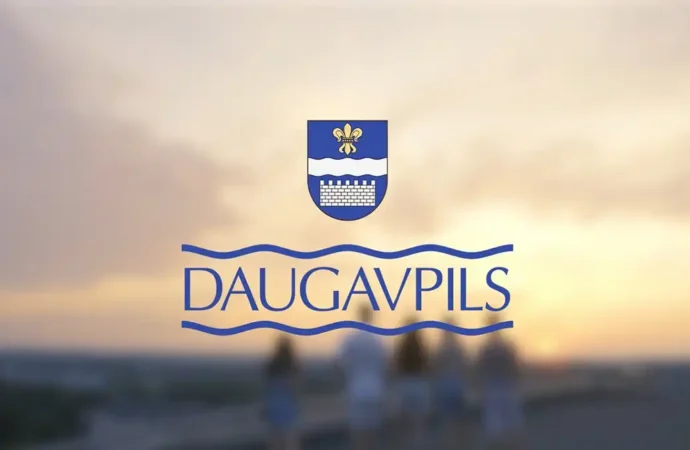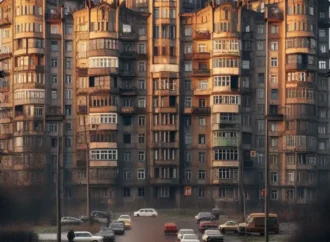Daugavpils The city’s main sights include the fortress, which houses a Mark Rothko Art Centre. Church Hill (Baznicu kalnas) is also worth a visit, with churches of four Christian denominations standing side-by-side. Several events in Latvian and European history have shaped Daugavpils, giving it the rich cultural heritage it has today. You can feel it
Daugavpils
The city’s main sights include the fortress, which houses a Mark Rothko Art Centre. Church Hill (Baznicu kalnas) is also worth a visit, with churches of four Christian denominations standing side-by-side.
Several events in Latvian and European history have shaped Daugavpils, giving it the rich cultural heritage it has today. You can feel it in the city’s architecture and the diversity of its inhabitants.
History
Daugavpils is a significant city for the region due to its rich history and diverse cultural influences. It’s home to a well-preserved 19th-century military complex, the Mark Rothko Art Centre, and a unique mixture of architectural styles. Located in the southeastern corner of Latvia, it’s also a major industrial center with numerous large factories such as Daugavpils Locomotive Repair Plant (Daugavpils Lokomotivju Remonta Rupnica), the Ditton drive chain factory, and Latvijas Maiznieks bread factory.
During the 19th century, the town rapidly grew into one of the most important centers of trade and industry in Eastern Latvia. The main reason for this was the city’s central location on the primary Saint Petersburg-Warsaw road and railway. In addition, the city was a key economic centre for inland navigation on the Daugava River – first timber floating and then grain and linen transportation. The prosperous city was also known for its thriving Jewish community, which by 1914 made up over 40% of the population.
When the Russian Empire collapsed in 1917, Daugavpils became part of the new independent Latvian Republic. In the following years, the city experienced a massive increase in its population due to influx of migrants from the rest of the Russian Empire. Most of the newcomers were Jews, as Daugavpils was one of the few Imperial cities where Jews were allowed to settle freely. The local kehilla was very active, with around 32 factories and 4000 artisans among its members.
The city’s Jewish population reached its peak in the middle of the 1920s, when it numbered over 11,000. By the end of World War II, however, Daugavpils was devastated by organised mass evacuation and destruction. Approximately 70% of the city’s prewar Jewish inhabitants were murdered. The number of the remaining community dwindled to just over 20 thousand in late 1940s.
As was the case in other Soviet cities, ethnic minorities were gradually “Russified.” By 1989 only about a quarter of the city’s Jews and Ukrainians spoke their respective languages. By the early 1990s, the same was true of Belarusians and Poles. With the return of democracy, Latvians once again became the majority in the city and by 2010 it had a total of 65000 inhabitants.

Culture
Located in the heart of Latgale (Eastern Latvia) Daugavpils is a major hub for this part of the country. It has a great deal of cultural and historical significance. Its central position on the main railway node between Saint Petersburg and Warsaw made it a thriving industrial city in 19th century. It had many large factories producing locomotives, electronic tools, metallurgy, drive chains and chemicals.
The city also benefited from inland navigation on the Daugava, transporting timber and grains. The population grew from 3000 in 1825 to 113,000 in 1914. Most of the inhabitants were Russians but a considerable percentage was Jewish. The city is rich in monuments to famous Jewish residents, the most prominent being the abstract expressionist painter Mark Rothko who was born there in 1903.
In Soviet times Daugavpils gained a reputation as an industrial center. The city was repopulated by settlers from other parts of the Soviet Union and the population rose rapidly. By 1959 it had 65000 inhabitants. Ethnic Latvians accounted for only 13.2% of the population and Jews – merely 3.4%, both declines testifying to the tragedy of World War 2 genocides.
Today the city is a major rail and road junction with large locomotive repair shops and rolling stock plants. Its industries produce electrical instruments, bicycles, synthetic fibre, tire cord and linen. In addition the city has a branch of the Riga Polytechnical Institute.
The city is a UNESCO World Heritage Site because of its impressive fortress walls and the Church Hill which overlooks the town. The city’s old town is a mixture of different architectural styles. It has numerous brick buildings which are unique in their kind. A bright example of this style is the building at 1/3 Saules Street which was designed by Wilhelm Neumann, an architect of German origin.
The facades of these buildings are decorated with shape-forming techniques typical of eclecticism. Another striking example is the house at 8 Muzeja Street which was built in 1906. The central square of the city has a bust of the poet A. Pumpurs (1841-1902) who wrote the epos “Lacplesis” about the legendary Latvian hero who fought against foreign conquerors.

Shopping
Daugavpils is a great place to shop for both tourists and locals. There are many large shopping centers and boutiques in the city, as well as traditional markets. You can also find a variety of souvenir shops and other unique places to buy gifts.
As an added bonus, the prices in Daugavpils are typically lower than in other European cities, making it an affordable destination for travelers on a budget. However, it is important to research the cost of items before you make a purchase. You may also want to compare the prices of different stores before you decide which one to buy from.
If you’re interested in exploring the rich cultural heritage of Latgale, you can visit the Ceramics and Pottery Centre. This museum is the only one of its kind in the country and provides visitors with a unique opportunity to learn about Latvian ceramics and pottery traditions and see the process of making hardened Baltic raku ceramics.
Other popular attractions in the city include the sombre fortress of Daugavpils, which was built in the 18th and 19th centuries, as well as the Church Hill (Baznici kalnas), where churches of four Christian denominations stand side by side. These landmarks give the city its distinct character and show its multi-religious past.
The city also offers a variety of entertainment activities. The city has an ice skating rink and bowling center, as well as modern hotels and restaurants. In addition, the city’s historic centre is a beautiful place to explore.
Although Daugavpils is a relatively safe city, it’s still best to exercise caution when traveling in unfamiliar areas. It’s also a good idea to keep your belongings close to you and avoid carrying large amounts of cash. Be sure to stay on safe streets and use public transportation whenever possible. If you’re unsure of your surroundings, ask locals for advice. They’re usually more than happy to help and can point you in the right direction. They can also recommend places to shop and eat.
Nightlife
The city has a lively nightlife, with plenty of restaurants, bars, and clubs to enjoy. Many of the most popular nightspots are located in the north-eastern part of the city near the Big Stropu Lake. The Rigas iela street is also a good place to hang out and dance the night away. The city is known for its pulsing music and high energy, making it a top choice for those who love to party in 2023.
Daugavpils is a cultural destination, featuring numerous museums and historic sites. The Mark Rothko Art Centre is a great option for those interested in contemporary art. You can also visit the Daugavpils Fortress, which boasts beautiful views and architecture. In addition, you can enjoy a stroll around the city’s greenery, or visit the Svente Manor and Museum of Military Vehicles.
If you want to learn more about the history of Latvia, you can visit the Local History Museum and explore its various expositions. You can also discover the city’s rich history by touring the historic buildings of the Old Town. Another cultural attraction is Dubrovin Park, which features a beautiful garden and musical theater. Alternatively, you can visit the ruins of the castle of the Livonian knights or explore the Orthodox and Lutheran cemeteries.
Another great way to experience the local culture is to visit the largest Shmakovka Museum. The museum offers a modern and attractive story about the oldest alcoholic beverage in Latvia. The museum also offers tours of the factory and a tasting experience.
Visiting daugavpils is affordable, and prices are lower than in other European cities. However, it is important to do your research before booking a trip to ensure you get the best deal possible. In addition, it is a good idea to plan your itinerary ahead of time and book accommodation and tours in advance.
Whether you’re looking for an active holiday or just a relaxing getaway, Daugavpils has something to offer everyone. Its numerous attractions, cultural events, and vibrant nightlife make it a great choice for anyone interested in exploring Latvian culture.

















Leave a Comment
Your email address will not be published. Required fields are marked with *